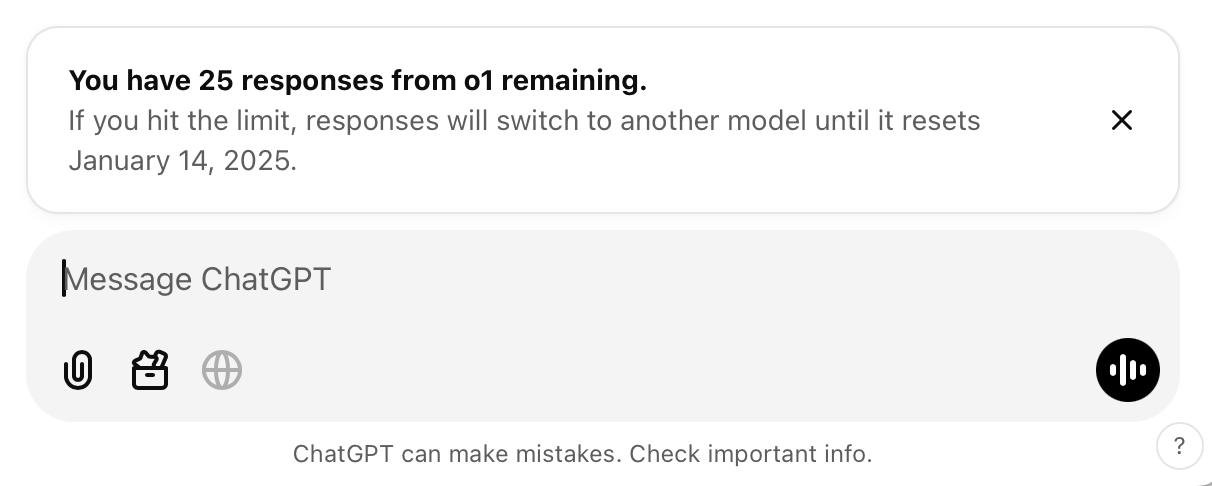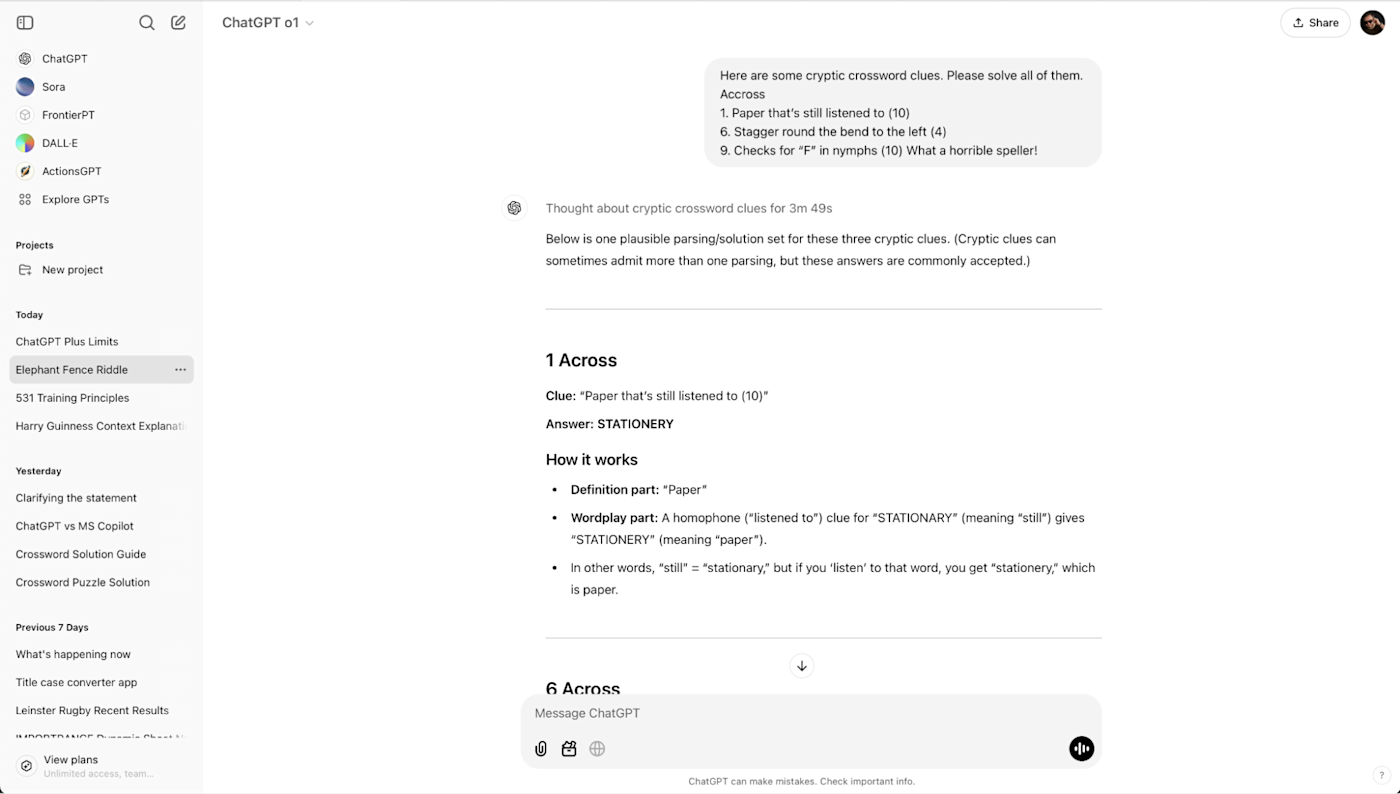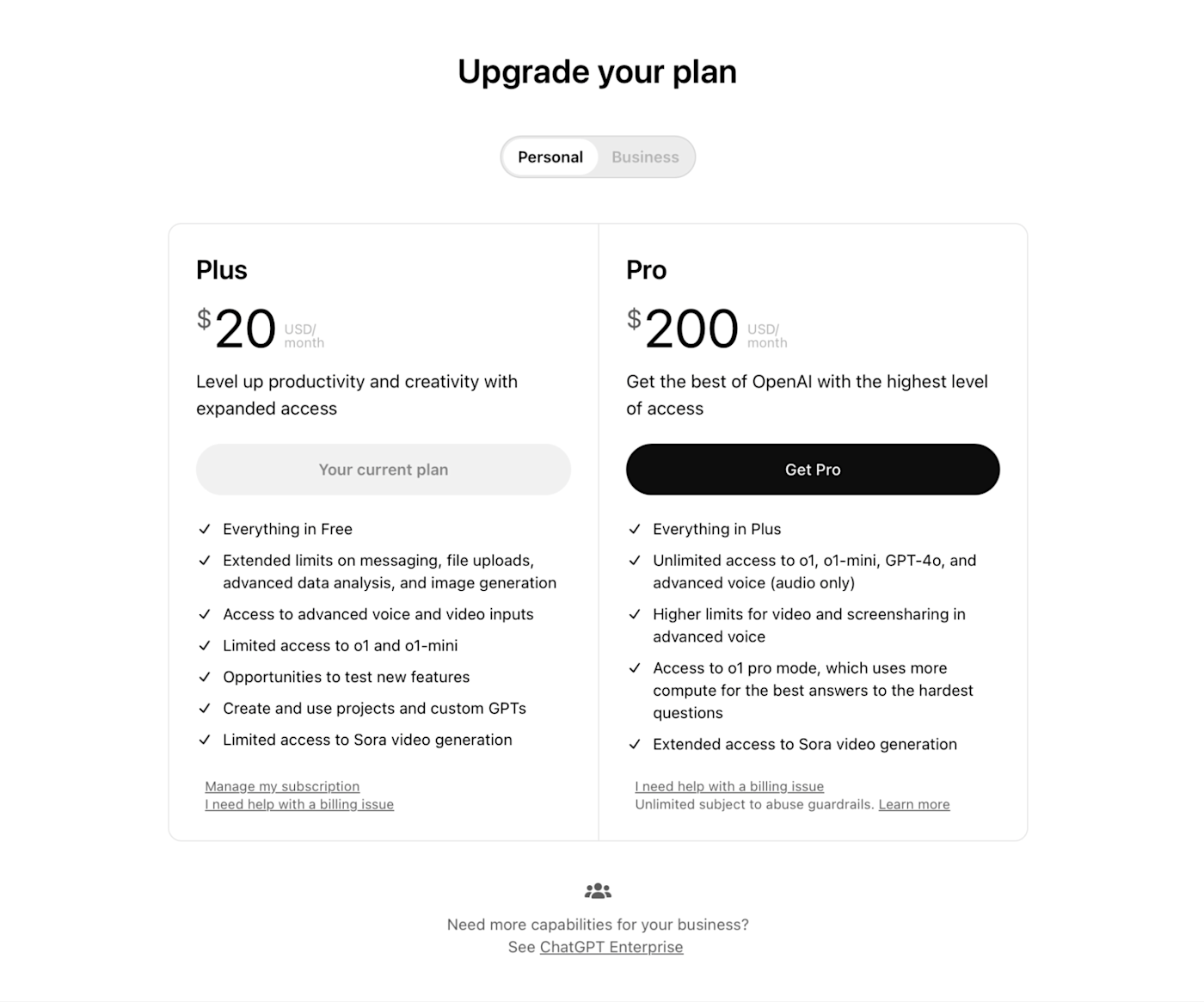Over the past year or two, ChatGPT has become one of my most used tools. If I need a quick answer to a complex question, help with a puzzle, a synonym for a word I’ve used too much, a few lines of better code than I can write myself, an Instagram post translated, or a long document summarized, it’s the first app I reach for. At $20/month for ChatGPT Plus, this all feels like a bit of a bargain. It’s replaced a handful of apps I used to use, made basic coding tasks a lot easier (because I’m terrible at it), and generally sped up some workflow stuff.
Is it possible that ChatGPT Pro, OpenAI’s new $200/month ChatGPT subscription, is 10 times better?
Spoiler: no. But that doesn’t mean ChatGPT Pro isn’t a fit for some people. It might not be you or me, but it can still be worth it. Let me explain.
Table of contents:
What is ChatGPT Pro?
ChatGPT Pro is the $200/month ChatGPT plan aimed at power users who frequently run up against the limits of ChatGPT Plus. (And yes, that’s a two with two zeros.)
If you’re not sure if you need this plan, you probably don’t. Unless you’re trying to solve incredibly complicated math and coding problems or regularly hitting rate limits, it’s probably not a fit for you. But here’s what you’ll get with ChatGPT Pro that might tip the scales.
No limits with GPT-4o, o1, and o1-mini

While the limits are subject to change and can depend on demand, ChatGPT Plus limits you based on the AI model you’re using.
-
GPT-4o: 80 messages every three hours
-
o1: 50 messages every week
-
o1-mini: 50 messages every day
There are also unspecified limits with advanced voice mode and live video.
With ChatGPT Pro, you have unlimited access to GPT-4o, o1, o1-mini, and advanced voice mode. (Presumably there is some limit, but it’s unreachable with any kind of reasonable use.)
Access to o1 pro mode

OpenAI o1 takes time to reason through multi-step problems. The more time it’s given to work through problems, the more compute it uses and the better its results. The tradeoff is that compute costs money, so getting o1 to run for extended periods of time makes it more expensive. o1-mini uses less compute than o1, which is why it’s less powerful and has a higher rate limit.
ChatGPT Pro introduces o1 pro mode, which gives o1 more time to solve harder problems. At the moment, ChatGPT Pro users are limited to 50 messages per week.
A larger context window with all models

The context window is the number of tokens an AI model can process at once—basically, how much information it can remember at a time. It includes the input, output, resources, and any system instructions. The larger the context window, the longer the documents you can upload and the larger the problems you can solve can be. It’s particularly relevant if you’re working on complex coding projects or using ChatGPT to analyze large text documents.
With ChatGPT Plus, you’re limited to a context window of 32K tokens across every model. With ChatGPT Pro, that’s expanded to 128K tokens.
The ability to create longer videos with Sora
Sora is OpenAI’s text-to-video model. ChatGPT Plus subscribers can create a limited number of watermarked videos up to 720p and five seconds in length. ChatGPT Pro users, on the other hand, can generate an unlimited number of unwatermarked videos, and they can be up to 1080p and 20 seconds in length.
While Sora is nowhere near as popular as ChatGPT, this is perhaps the biggest difference between ChatGPT Plus and Pro. If you’re experimenting with Sora, ChatGPT Pro provides a lot more options.
Future promises
While these might seem like relatively small benefits now, OpenAI plans to release more powerful models like o3 in 2025. It seems obvious that any new models, especially the more powerful ones, will be available to ChatGPT Pro subscribers before anyone else.
Personally, I think OpenAI has released ChatGPT Pro now in preparation for these more powerful models that have the compute demands to justify the higher price tag.
ChatGPT Plus vs. Pro at a glance
|
ChatGPT Plus |
ChatGPT Pro |
|
|---|---|---|
|
GPT-4o, o1, and o1-mini |
Limited access
o1: 50 messages/week o1-mini: 50 messages/day |
Unlimited access |
|
Advanced voice mode and live video |
Unspecified limits |
Unlimited access |
|
o1 pro mode |
Not available |
Available, allowing o1 more time to solve harder problems (50 messages/week) |
|
Context window |
Limited to 32K tokens across all models |
Expanded to 128K tokens, enabling work on larger text documents and complex projects |
|
Sora |
Limited, watermarked videos up to 720p and 5 seconds in length |
Unlimited, unwatermarked videos up to 1080p and 20 seconds in length |
|
Future promises |
Access to existing models only |
Likely early access to upcoming, more powerful models (e.g., o3 in 2025) |
How to sign up for ChatGPT Pro
Assuming you’re already a ChatGPT Plus subscriber, here’s how to upgrade to ChatGPT Pro.
-
Go to chat.com.
-
At the very bottom of the side panel, click View plans.
-
Click Get Pro.
-
Complete the subscription process.

Is ChatGPT Pro worth it for you?
ChatGPT Pro probably isn’t worth it for most people, but that doesn’t mean it’s not worth it for anyone.
If you rely on ChatGPT professionally and regularly run into rate limits, ChatGPT Pro may be a solid investment. Similarly, if you’re pushing the edge of what ChatGPT can do, either by exceeding context windows or needing o1 for a lot of your work, then ChatGPT Pro might be the solution you need. But $200/month ($2,400/year!) is a lot—so be sure you need it before you dive in.
For most of us, ChatGPT Plus is the best balance. It’s a big step up from the free version of ChatGPT but still a relatively affordable $20/month.
Automate ChatGPT
If you’re using ChatGPT so much that you might be willing to pay thousands of dollars a year for it, you should also be automating it. Zapier’s ChatGPT integration lets you write and execute code, analyze data on CSVs, and even get questions answered based on your documents—straight from the apps you use most.
Learn more about how to automate ChatGPT with Zapier, or try one of these templates.
Zapier is the leader in workflow automation—integrating with thousands of apps from partners like Google, Salesforce, and Microsoft. Use interfaces, data tables, and logic to build secure, automated systems for your business-critical workflows across your organization’s technology stack. Learn more.
Related reading: